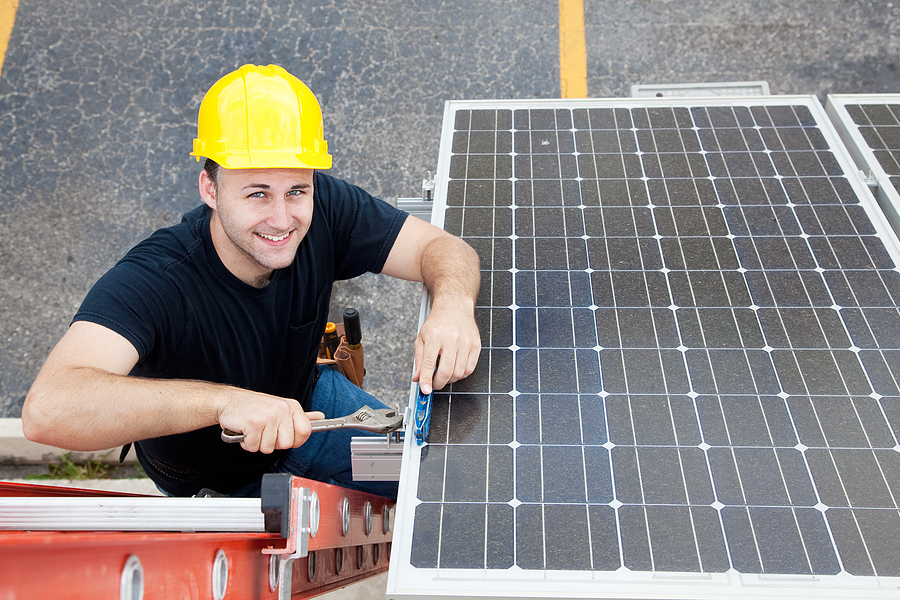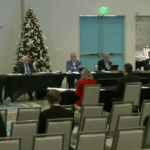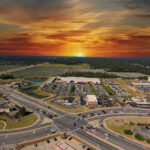Green retrofitting of commercial buildings is outpacing the construction of new green buildings, according to a new report issued this week.
The trend could mean that more building owners may believe that bringing their buildings up to Leadership in Energy & Environmental Design (LEED) certification may not only be cost efficient, but the environmentally conscious thing to do. It could also mean that new construction has continued to plummet in the last four years, yielding few new green building projects on the drawing boards.
LEED-certified existing buildings are outpacing their newly built counterparts, according to the U.S. Green Building Council’s (USGBC) report. As of December, square footage of LEED-certified existing buildings surpassed LEED-certified new construction by 15-million square feet on a cumulative basis.
McGraw Hill Construction’s Green Outlook 2011 report states that by 2015, the green share of the largest commercial retrofit and renovation activity will more than triple, representing a $14 billion to $18 billion opportunity in major construction projects alone.
“The U.S. is home to more than 60 billion-square-feet of existing commercial buildings, and we know that most of those buildings are energy guzzlers and water sieves,” Rick Fedrizzi, president, CEO and founding chair of USGBC, said in a statement. “Greening these buildings takes hands-on work, creating precious jobs especially for construction workers. Making these existing buildings energy and water efficient has an enormous positive impact on the building’s cost of operations. And the indoor air quality improvements that go with less toxic cleaning solutions and better filtration create healthier places to live, work and learn.”
Historically, LEED-certified green projects were overwhelmingly made up of new construction projects, both in volume and square footage. That began to change in 2008, according to USGBC, when the LEED for Existing Buildings: Operations & Maintenance (O&M) program began experiencing explosive growth. In 2009, projects certified under LEED for Existing Buildings: O&M surpassed those certified under its new construction counterpart on an annual basis, a trend that continued in 2010 and 2011.
“This new data marks the first time that LEED-certified existing buildings have surpassed LEED-certified new construction cumulatively,” Fedrizzi continued. “The market is becoming increasingly aware of how building owners can get better performance through green operations and maintenance…”
David Cohen, senior director of property at Fireman’s Fund Insurance Co., said his company has seen their customers express increased interest in retrofits to make their buildings greener.
“We are not surprised to see the increase of existing buildings becoming LEED-certified given the economic slowdown’s impact on new construction and as building owners have become more aware and educated on both the financial impact and environmental benefits of having a green building,” Cohen said. “Green buildings can boost real estate owners’ bottom line by protecting and building net operating income, attracting and retaining quality tenants and improving the environment. Simply put, green buildings create a triple-net effect, benefitting the owners’ bottom line, its tenants and the environment.”
Fireman’s Fund is considered the first property/casualty insurance firm to offer green insurance to the U.S. commercial marketplace by providing a financial incentive for green building owners in the form of a 5 percent discount on the policy premium for LEED-certified buildings.
The company has recently expanded its green offerings to include historic buildings, hotels, manufacturing facilities, restaurants, and personal and commercial auto.
Since the economic downturn there have been few new studies on the value of building green, or retrofitting a building to be green, for developers.
A study by CoStar Group in 2008 showed that sustainable “green” buildings outperform their non-green peer assets in terms of occupancy, sale price and rental rates, sometimes by wide margins.
At that time, LEED buildings were commanding rent premiums of $11.33 per square foot over their non-LEED peers and had 4.1 percent higher occupancy. Rental rates in Energy Star buildings represented a $2.40 per square foot premium over comparable non-Energy Star buildings and had 3.6 percent higher occupancy, the CoStar report showed.
Energy Star buildings also sold for an average of $61 per square foot more than their peers, while LEED buildings commanded $171 more per square foot, according to CoStar.
“Projects worldwide are proving that green building doesn’t have to mean building new,” the USGBC states.
A major renovation for the now recently LEED-certified Empire State Building in New York has its owners forecasting they will slash energy consumption by more than 38 percent, saving $4.4 million in energy costs annually.
Over 43,000 projects are currently participating in the commercial and institutional LEED rating systems, comprising nearly 8 billion-square-feet of construction space in the U.S. and 120 countries. Additionally, nearly 15,000 homes have been certified under LEED.
Topics USA Construction
Was this article valuable?
Here are more articles you may enjoy.



 Acrisure to Buy MGA Vave From Canopius
Acrisure to Buy MGA Vave From Canopius  After Years of Pushing Rate Hikes, Florida’s Citizens Now Wants HO Rate Decrease
After Years of Pushing Rate Hikes, Florida’s Citizens Now Wants HO Rate Decrease  Trump to Issue Order Creating National AI Rule
Trump to Issue Order Creating National AI Rule  Man Sentenced for Flashing Three Insurance Agencies in Georgia
Man Sentenced for Flashing Three Insurance Agencies in Georgia 

